Types of springs used for tying traps
The types of springs used in tying traps are push springs, pull springs, and torsion springs (pine needle springs).Here's another article
Raise the capture rate with a flip-up leg trap>compression spring
Tucking traps using compression springs are the most orthodox ones. A compression spring, also known as a compression spring, is a coiled spring. When no force is applied, there is a gap (pitch) between the coils.
A push spring is a spring that comes out when you disassemble a ballpoint pen. It is widely used not only for tying traps, but also for machine parts and cars.
When used for tying traps, the spring is compressed when the trap is set, and the force that expands the spring when activated is used to capture the trap.
As you can see in the video above, the trap is fixed with the compression spring compressed, but it takes quite a bit of force to compress the spring. *Weak springs can't beat the beast's explosive power, so use a reasonably strong spring.
By the way, compression springs generally have a thin coil diameter and a small pitch for light loads, but they are often made with a thick coil diameter and a large pitch for heavy loads.
If the spring is exposed, it may be distorted when compressed, or soil or plants may get caught during operation. There are many cases.
pull spring
Also called a tension spring, unlike a compression spring, the coil is wound in close contact with no gaps. It has hooks on both ends and uses the action that returns when pulled.
It is also used in bicycle stands and is a spring with a very wide range of uses. In addition, by devising the shape of the hook, it can be used in various ways.
As you can see in the video above, the trap is set up with the spring pulled, and when the trigger is activated, the hook comes off and the wire is tightened by the force of the spring contracting.
Trap traps that use vertical pull springs or torsion springs are usually buried in the ground. On the other hand, in the case of a pull spring, depending on the device, the trap can be activated without digging a hole, so it is less affected by terrain conditions.
torsion spring
It is a spring that uses the power to release the force that is caught in it. The spring is also used for clothespins, so I think it's easy to get an image of it. The coil part is generally without pitch (closely wound), but there are some with pitch depending on the application. The thicker the wire, the greater the force.
They are very strong springs, some of which are so strong that they cannot be compressed by the human hand. Also, the performance will change depending on the shape of the tip and the length of the arm. When used for tying traps, compared to other springs, it does not need to be compressed, so it is easy to set.
On the other hand, it has a very strong jumping force, and you need to be careful because you may get injured if it explodes.
Points for choosing springs
As the spring is used, it will inevitably sag (the force of the coil weakens and the elasticity decreases). If the sagging occurs, the performance of the tying trap cannot be fully demonstrated, and the catch rate will decrease. Therefore, you will need to replace the worn spring, but you can also change the spring specifications slightly depending on the situation.
For example, if you have a lot of air repelling*, you may be able to reduce the occurrence rate by increasing the force of the spring. The stronger the force of the spring, the faster it will explode, so you can expect to increase your catch rate. *The stronger the force, the more difficult it is to set, and the risk of injury due to accidental discharge.
* Sky Hajiki : Unable to capture even though the tying trap has been activated.
By the way, we sell traps that use push springs, but we often receive inquiries about the specifications of the springs.
If you are using a type that compresses the push spring inside the PVC pipe, the compression length and coil outer diameter are determined by the PVC pipe. Keep the changes minor. We do not recommend making too many changes.
By the way, there are piano wire, hard steel wire, and stainless steel wire (SUS) for the material of the compression spring. Since tying traps are used outdoors, stainless steel is best, but the price is hard steel wire < piano wire < stainless steel wire.
If you want to change the specifications of the PVC pipe, first consider the diameter of the snare (the wire ring that wraps around the legs. Also called wasa). If you want to find a suitable spring, first measure the circumference of the snare based on the tread you are using.
For circular snares, you can calculate the circumference by multiplying the diameter by 3.14. For example, in the case of a circular snare with a diameter of 12 cm, 12 x 3.14 is approximately 36 cm in circumference. Perimeter length = Length of spring contraction. In the case of a tying trap, add a little extra leeway and multiply it by 1.4 times to make the length of the spring contraction.
In other words, for a circular snare with a diameter of 12 cm, it is 12 x 3.14 x 1.4, and the length of spring contraction is about 50 cm. Overall spring length - spring compression length = length at which the spring compresses. In addition, when the entire compression length is stored in the PVC pipe, the total length of the PVC pipe is equal to the spring compression length.
Also, of course, the coil diameter of the spring must be smaller than the inner diameter of the PVC pipe.
Commercially available springs have specifications that are determined in consideration of spring characteristics and balance, so you can use them with confidence. Since it is difficult to design the spring specifications by yourself, it is a good idea to tell the shop about the ideal compression length, total length, coil diameter, etc. based on the above calculations.

 箱罠
箱罠
 くくり罠
くくり罠
 パーツ類
パーツ類
 電気柵
電気柵
 自作キット
自作キット
 防獣グッズ
防獣グッズ
 監視カメラ
監視カメラ
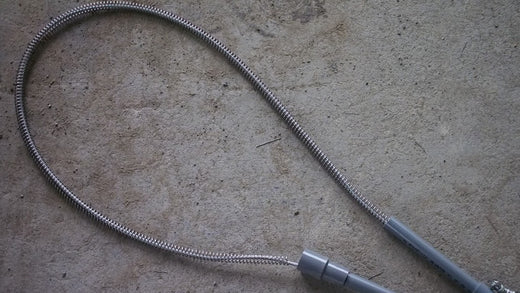
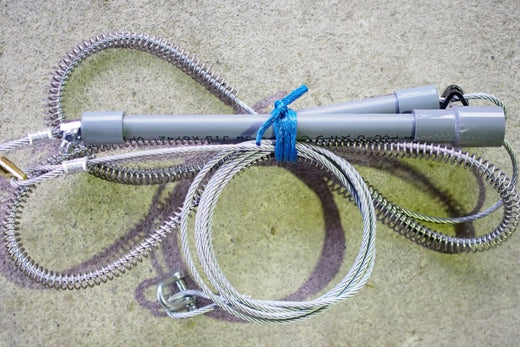
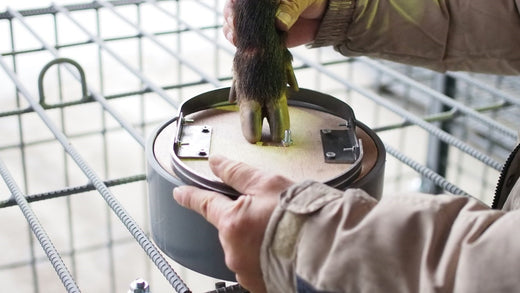
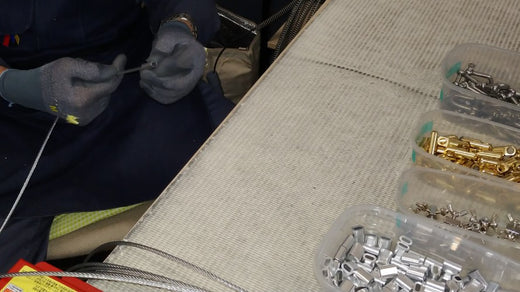
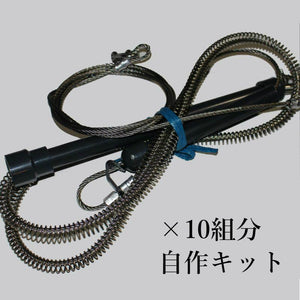
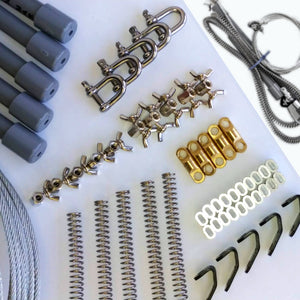
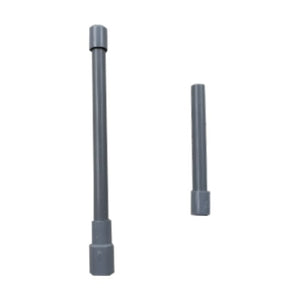
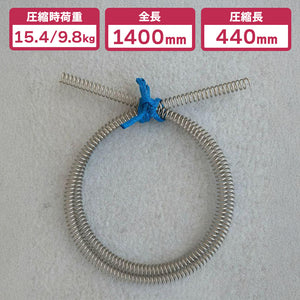
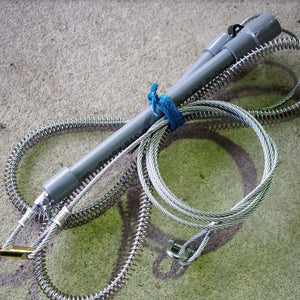
 box trap
box trap
 tying trap
tying trap
 enclosure trap
enclosure trap
 Prevention and avoidance goods
Prevention and avoidance goods
 electric fence
electric fence
 trap surveillance camera
trap surveillance camera
 transportation goods
transportation goods
 Trap detection sensor
Trap detection sensor
 hunting supplies
hunting supplies
 hunting books
hunting books
 Anti-bird goods
Anti-bird goods
 Agricultural materials/machinery
Agricultural materials/machinery
 boar
boar
 deer
deer
 Kyon
Kyon
 monkey
monkey
 raccoon
raccoon
 Badger
Badger
 palm civet
palm civet
 raccoon dog
raccoon dog
 nutria
nutria
 mouse or rat
mouse or rat
 Mole
Mole
 bear
bear
 pigeon
pigeon
 Crow
Crow







